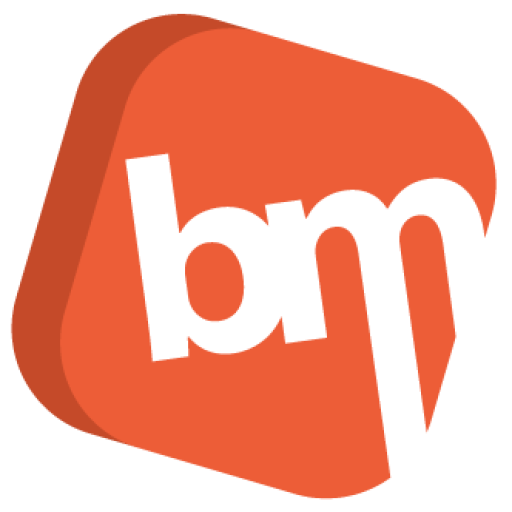
Google Web Stories: What Is It, and How Can It Help You Get More Brand Exposure? | A 2022 Review
There has always been a clear distinction between Google and social media channels. However, with the arrival of Google Web Stories as a new digital marketing tool, that line has since been blurred.
This innovative online business growth accelerator from the biggest search engine in the world offers businesses a unique opportunity to harness the full potential of AI-powered content marketing.
If you want your business to remain competitive, then publishing user-generated content has to be a major part of your online marketing strategy. Read on to find out how Google Web Stories can impact your business in 2022 and how to make the best of it.
What Are Google Web Stories?
Google Web Stories are interactive pages of user-generated content made up of text, images, and audio. They are video-first content, commonly known as AMP stories, which can be shared with a wide range of audiences across many platforms.
There are many different styles that content creators can choose from, but to get the best out of AI-powered content marketing, the following are recommended:
- Evergreen content
- Educational or experiential stories
- Quizzes and polls
- Updating content
- Live stories
- First-person narratives
After being uploaded to the Google page, the web stories will either be carousels in Google Discover or they will appear as standard search results. If you have a social media platform, you can link your stories there or add them as a newsletter.
Another popular way of sharing stories is as individual web pages which make them visible as regular search results. One way to do this is by embedding the stories in your webpage, such as podcasts or YouTube videos, or publishing them as individual pages.
How To Make Google Web Stories
The goal of creating Google Web Stories is to improve the effectiveness of your digital marketing strategy. However, to achieve this, you have to know how to properly create a ranking web story that will provide actual value to its audience.
These are the key steps to making a good web story:
- Narrative
Your narrative forms the basis of your entire web story and is the first thing you have to decide on. Experienced content writers will have no difficulty doing this, but for those who face challenges, Google has a tool to help them. There is a storyboard script template that you can use to help in drafting a good narrative.
- Create
When the template is ready, you can begin working on your story. Be sure to remember all the techniques needed when creating evergreen and high-ranking content, such as the use of keywords and the creation of links within your content.
- Meta Data
Web Stories need to satisfy certain requirements before they can appear on Google Discover or Google search engine results pages. You will need to supply the necessary metadata, such as the publisher logo, poster portrait, publisher name, and title of the story. A full metadata list is available on Google.
- Edit
To help you stay on track while creating your content, you will need to choose an editor. Highly skilled creators with some coding experience can create a story with custom functionality using instructions that are available from an AMP tutorial.
Many online editors that are available require no coding experience at all, such as the Web Stories Plugin on WordPress. This editor will provide you with space for branded elements, has a drag-and-drop builder, and a bunch of great-looking templates to choose from. You can even make use of some of the assets that can be found in your WordPress media library.
- Test and Publish
Once you have finished creating and editing your content, it will be time to test the performance of your webpage. To do this, the following steps can be useful:
- There are two very useful tools on AMP which can be used to test the validity of your Web Story, namely the AMP Test Validators or the AMP Test Tool.
- With the recent Google updates which focus on user experience, it is very important to check if your story works well on different platforms, especially on mobile devices which were the main focus of these updates. You can use Chrome Developer Tools to check how well your story renders.
- Finally, Google indexing is an important part of your Web Story which impacts many different things, such as how it ranks on search engines. Indexing can be checked using the URL Inspection Tool and the Site Maps report.
What Format Are They In?
The format of your story will usually consist of three major parts, namely:
- Poster
Your Web Story poster can be thought of as a kind of packaging for your story. It is the first thing your audience sees, and as such, should be made as enticing as possible. If, for example, your Web Stories are for marketing crypto companies, then the poster must be designed in such a way that the viewer will immediately know to expect content covering that topic.
- Cover Page
The cover page will contain a bit of content intended to draw in the reader and make them want to read further. You can add a short summary of the content that is to follow.
- Story Pages
This is the main body of your Web Stories and contains all the information that you wish to share. Keeping with the example of Web Stories for marketing crypto companies, the story pages are where you will discuss the main points about crypto, how it relates to your company, and what benefits your audience can expect.
A Few Examples
To give you a better idea of what Google Web Stories are all about, here are some good examples:
- The Burger Sisters of Kenya by Vice
This is a great example of an inspirational story focusing on the story of two sisters building their businesses in the face of overwhelming odds. It utilizes a first-person narrative dialogue and top-quality visuals and videos. There are lots of audio transcriptions and captions used throughout to add to the overall user experience.
- INPUT by Ford
To promote its Mustang Mach-E 1400 Prototype, Ford turned to INPUT to help create an amazing and captivating story that brings the prototype to life. The Web Story utilizes high-end visuals to draw in users and invite them to continue watching as the story unfolds. INPUT uses Google-recommended video-first elements to remain engaging and continue to be interactive throughout the story.
- Quarantine Cooking: Japanese Curry
This is a great example of how to create content that your audience will be able to relate to. The focal point of this Web Story is the chef who takes the viewers on a great journey from recipe to table, with lots of active interaction being used throughout. This sets it apart from other cooking videos that are difficult to navigate and don’t necessarily engage with the audience.
- How Stuff Is Made: Money
If you are looking for an example of how educational material can be presented in a fun and engaging way, “How Stuff Is Made: Money” is a great example of a Web Story that does just that. It is an ultra-efficient Web Story that allows the audience to easily navigate back and forth throughout the video as the viewer searches for the particular information they need.
Can This Be Monetized?
One of the great things about Google Web Stories is that they can be monetized, allowing you to get actual value and rewards for your content. Detailed steps that are needed to monetize your Web Story are available on Google’s support page.
However, the basics are as follows:
- Create and sign in to your AdSense account
- Select “Ads” and “By ad unit”
- Click “display ads”
- Choose a name for your ad
- Click “responsive” in the Ad size section
- Click Create
Some Tips To Remember
Web Stories based on user-generated content work very well as a digital marketing strategy, as long as you remember the following tips:
- Make use of engaging elements
- Use video-first storytelling
- Always check for AMP validity before publishing your stories
- Stick to your brand identity
- Try as much as possible to follow the guidelines according to Google-SEO
- Focus on user-experience
- Your stories should be accessible
Important Web Stories SEO Points
Here is a breakdown of the important points regarding the creation of engaging Web Stories:
- Use evergreen and original content
- Add links to all your stories
- Titles should be less than 90 characters long
- Check if your story has been indexed
- Confirm AMP validity before publishing
- Add subtitles to all videos and alt-text to all images
Final Word
If you have experienced how effective a digital marketing strategy based on social media platforms can be, then you know what to expect from Google Web Stories. Utilizing AI-powered content marketing, this Online Business Growth Accelerator can be the key to helping you create new business opportunities that will take your company to the next level.





